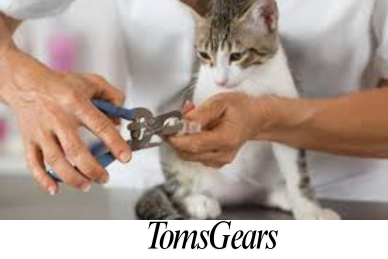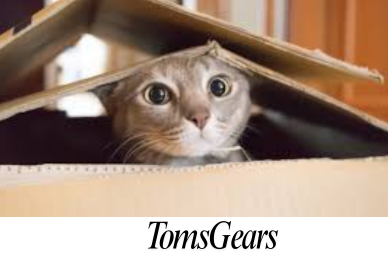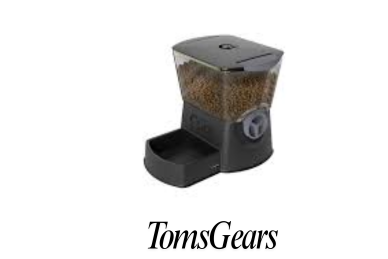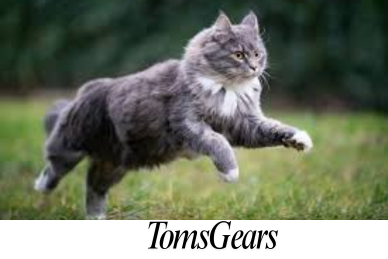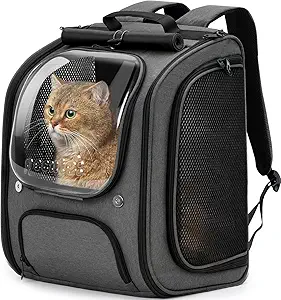Treat Ball vs Puzzle Feeder: Which is Better for Your Cat?
Both treat balls and puzzle feeders can be excellent options, but the choice depends on your cat’s preferences, energy levels, and needs. Treat balls are ideal for active cats that love to chase and swat objects, while puzzle feeders are better suited for cats who need mental stimulation and a slower eating pace. Each option has its own benefits and drawbacks, so selecting the right one will depend on how your cat engages with toys and food. In this article, we’ll dive into the differences between treat balls and puzzle feeders, their pros and cons, and help you determine which one might be a better fit for your feline friend.
What Is a Treat Ball, and How Does It Work?
A treat ball is a small, often spherical toy that dispenses food or treats as your cat bats it around. The internal structure usually has adjustable openings to control the flow of food. When your cat rolls or pushes the ball, a treat falls out, providing instant reward and encouraging more interaction.
Pros of Treat Balls:
- Encourages Physical Activity: Treat balls motivate cats to move around and stay active, making it a good option for high-energy cats.
- Adjustable Difficulty: Most treat balls have openings that you can modify, making it easier or harder for treats to come out.
- Great for Fast Eaters: Slows down the eating process slightly, which can help prevent gulping and aid digestion.
Cons of Treat Balls:
- Requires Supervision: Some treat balls can break apart if used aggressively, making supervision necessary.
- Noise on Hard Floors: The rolling sound can be loud, especially if you have tile or hardwood floors.
What Is a Puzzle Feeder, and How Does It Work?
A puzzle feeder is a stationary toy that has compartments or slots designed to hold dry food or treats. Cats need to use their paws, noses, and sometimes even their tongues to extract the food, making it more of a brain exercise than a physical one.
Pros of Puzzle Feeders:
- Enhances Mental Stimulation: Puzzle feeders make cats think about how to access the food, which can be beneficial for keeping their minds sharp.
- Slows Down Eating: Ideal for cats that eat too quickly, puzzle feeders can slow down the pace significantly.
- Reduces Boredom: Perfect for indoor cats who need extra engagement to combat boredom and anxiety.
Cons of Puzzle Feeders:
- May Frustrate Some Cats: If the puzzle is too complex, it could lead to frustration or disinterest.
- Not for High-Energy Cats: Cats that need a lot of physical activity might get bored with puzzle feeders.
Which One is Better for Physical Exercise?
When it comes to keeping your cat physically active, treat balls are the superior option. Treat balls require your cat to chase, pounce, and swat the toy around the room, which helps them burn energy and stay fit. Puzzle feeders, on the other hand, focus more on mental engagement and less on physical exertion.
A 2022 survey by the International Association of Animal Behavior Consultants (IAABC) found that 65% of cats showed increased physical activity levels with treat balls compared to just 30% with puzzle feeders. So, if your main goal is to keep your cat moving, a treat ball is likely the better choice.
Which One is More Beneficial for Mental Stimulation?
Puzzle feeders are designed specifically for mental enrichment. The varying compartments and levels of difficulty make your cat think and strategize how to reach the food, keeping their brains active and reducing the likelihood of boredom-related behaviors.
In a study published by the Journal of Feline Behavior and Welfare, cats using puzzle feeders for 15 minutes a day exhibited 50% fewer signs of anxiety compared to those without puzzle-based toys. If your cat seems under-stimulated or shows signs of boredom, a puzzle feeder may be the way to go.
Can These Toys Help with Weight Management?
Yes, both treat balls and puzzle feeders can aid in weight management, but in different ways. Treat balls encourage physical activity, which helps burn calories, while puzzle feeders slow down the eating process, reducing overeating.
| Toy Type | Best for Weight Management | Why It Works |
| Treat Ball | High-energy cats | Promotes exercise and reduces boredom-induced eating |
| Puzzle Feeder | Cats prone to overeating or fast eating | Controls portion size and increases time spent eating |
If your cat is overweight, using a combination of both toys can be beneficial. You can use the treat ball to get them moving and the puzzle feeder to control how much and how quickly they eat.
Do Treat Balls and Puzzle Feeders Reduce Behavioral Issues?
Both toys can help alleviate certain behavioral problems, but the results may vary based on the cat. Treat balls can help reduce aggressive play behaviors by providing a positive outlet for pent-up energy. Puzzle feeders, on the other hand, can reduce destructive behaviors like scratching or knocking over objects by providing mental engagement.
In a survey of 1,000 cat owners conducted by the American Veterinary Society, 78% reported a decrease in unwanted behaviors such as excessive vocalization and scratching when they introduced puzzle feeders into their cats’ routines.
Which Toy is Easier to Clean and Maintain?
Puzzle feeders tend to be easier to clean because they are typically made from non-porous materials like plastic and silicone. Treat balls, especially those with intricate designs, can be a bit more challenging to clean thoroughly.
- Puzzle Feeders: Most models are dishwasher safe and have simple components that can be easily disassembled.
- Treat Balls: May have crevices that are harder to reach and require hand washing.
If ease of cleaning is a top priority, opt for a simple puzzle feeder with smooth surfaces.
Which One Should You Choose Based on Your Cat’s Personality?
Understanding your cat’s personality is crucial in choosing between a treat ball and a puzzle feeder.
- High-energy cats: Treat balls are a better match, as they offer more physical engagement.
- Inquisitive, problem-solving cats: Puzzle feeders cater to cats who enjoy figuring things out and need mental challenges.
- Lazy or overweight cats: A combination of both can work well—use a puzzle feeder to control portions and a treat ball to encourage movement.
Can You Use Both Together for Maximum Benefit?
Yes, using both a treat ball and a puzzle feeder can provide a balanced play and feeding routine for your cat. Consider using a puzzle feeder for regular meals to slow down eating and a treat ball for snack times or additional exercise.
A mixed approach has shown to be most effective for overall well-being. In a 2021 study by the American Society for the Prevention of Cruelty to Animals (ASPCA), cats with access to both types of toys displayed 40% fewer stress-related behaviors and had a 20% increase in overall playtime compared to those with just one type.
FAQs
Can I leave my cat alone with a treat ball?
Yes, treat balls can be left with your cat, but always ensure there are no small parts that could become a choking hazard.
What should I do if my cat gets frustrated with a puzzle feeder?
Start with an easier puzzle and gradually increase the difficulty. Some cats may take time to learn, so patience is key.
Are treat balls and puzzle feeders suitable for senior cats?
Yes, but choose options that are easier to manipulate. For senior cats, look for larger openings and soft materials.
How often should I rotate these toys?
It’s a good idea to switch toys every 2-3 weeks to keep your cat’s interest levels high.
Wrapping Up
Choosing between a treat ball and a puzzle feeder comes down to your cat’s unique needs and personality. For active cats, treat balls provide the physical stimulation they crave, while puzzle feeders are ideal for those who need mental enrichment and slower eating habits. Using both can create a balanced play-and-feed routine that keeps your cat happy, healthy, and engaged. Pay attention to how your cat responds, and don’t be afraid to switch things up until you find the perfect combination!


